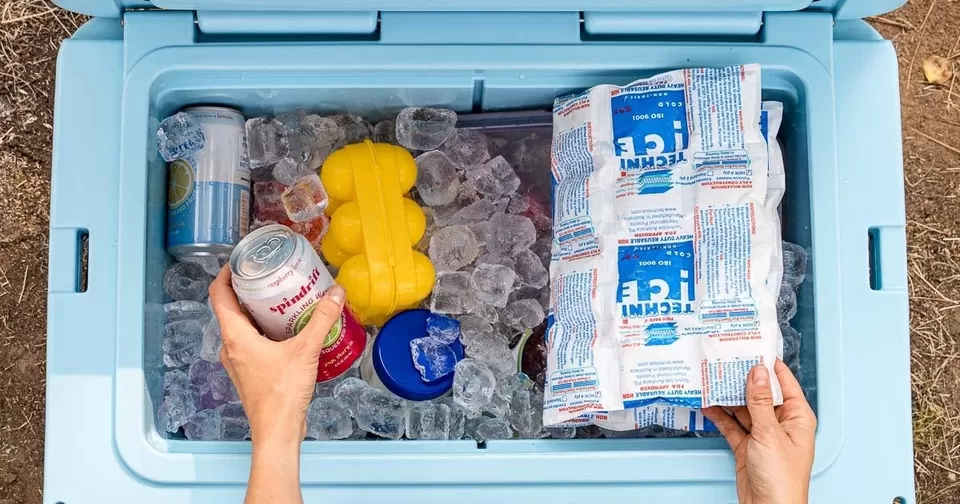Keeping perishables cold is crucial for maintaining their freshness, quality, and safety during transportation, storage, and handling. Whether you're dealing with food, pharmaceuticals, or other temperature-sensitive goods, having the right methods and tools for temperature control can prevent spoilage, contamination, and financial loss. In this article, we’ll explore effective strategies for keeping perishables cold across various industries.
Why Is Keeping Perishables Cold Important?
Keeping perishables cold items like food, medicines, and biological samples are highly sensitive to temperature fluctuations. When these items are exposed to temperatures outside the recommended range, they can spoil, lose their nutritional value, or even become unsafe to consume or use. Keeping perishables cold helps to:

Maintain Product Quality: Temperature control preserves the freshness, texture, taste, and nutritional value of food.
Ensure Safety: For pharmaceuticals and food, maintaining cold storage prevents bacterial growth, which can lead to foodborne illnesses or degraded medication.
Prevent Waste: Proper cooling prevents spoilage, reducing food waste and loss of valuable products.
Comply with Regulations: Many industries have strict guidelines for temperature-controlled shipping and storage. Keeping perishables cold ensures compliance with these regulations.
Methods for Keeping Perishables Cold
To keep perishables cold, a combination of effective packaging, refrigeration, and logistics strategies is essential. Here are some common methods used across industries:
1. Refrigeration and Freezing
Refrigeration and freezing are the most common ways to keep perishables cold. Temperature-controlled storage units, such as refrigerators, freezers, and cold storage rooms, are crucial for maintaining a stable environment for sensitive goods.
Refrigeration (34°F - 40°F): For fresh foods like fruits, vegetables, meats, dairy, and some pharmaceuticals, refrigeration slows down microbial growth and prevents spoilage.
Freezing (Below 32°F): Freezing is used to extend the shelf life of many perishable foods, including frozen meals, ice cream, and certain medical products like vaccines and blood samples.
2. Cold Chain Packaging
Cold chain packaging plays a vital role in protecting perishables during transportation. This packaging helps maintain a constant temperature and prevents external factors, such as heat, from affecting the goods. Common cold chain packaging options include:
Gel Packs: These packs, which are frozen and placed around perishables, absorb heat during transit and maintain a stable cold temperature.
Dry Ice: Ideal for keeping goods at very low temperatures, dry ice is commonly used for shipping frozen foods, pharmaceuticals, and laboratory samples.
Insulated Boxes or Coolers: Insulated packaging helps prevent heat from entering, keeping the internal temperature stable for longer periods. These are commonly used for food delivery, meal kits, and pharmaceutical shipments.
3. Refrigerated Transport
Transporting perishables requires specialized vehicles equipped with refrigeration systems. Refrigerated trucks and temperature-controlled containers ensure that goods remain cold during long-distance shipping or overnight delivery.
Continuous Temperature Monitoring: Many refrigerated transport options now come with temperature monitoring systems to provide real-time updates, ensuring that the temperature remains consistent throughout transit.
GPS Tracking: In addition to temperature monitoring, GPS tracking ensures that perishable goods are being delivered on time and without unnecessary delays, which could lead to temperature excursions.
Best Practices for Keeping Perishables Cold
To optimize cold storage and transportation, it’s important to implement a few best practices:
1. Pre-Cool Perishables
Before packing perishables for transport, it's crucial to pre-cool the items to their ideal storage temperature. This helps to prevent the product from warming up during the early stages of the shipping process.
2. Proper Packing and Insulation
When shipping perishables, it's essential to use the right materials to protect the items from heat. Use high-quality insulated boxes, coolers, and gel packs to surround perishable items. Ensure that there is sufficient insulation to keep the cold in and heat out.
3. Maintain Consistent Temperature
Consistency is key when it comes to keeping perishables cold. Monitor temperatures at various stages of the journey—during storage, packaging, and transport. Real-time monitoring devices are essential to ensure that goods remain within the ideal temperature range.
4. Plan for Delays
Delays during transportation can lead to spoilage or temperature excursions. It's important to have contingency plans in place, such as backup cooling devices or additional insulated packaging, to ensure perishables remain cold in case of unexpected delays.
Industries That Rely on Keeping Perishables Cold
Several industries depend heavily on temperature-controlled solutions to ensure the safe transport and storage of perishables:
1. Food Industry
From farm to table, the food industry relies on keeping perishables cold at every stage of the supply chain:
Farmers and Producers: Cold storage is essential for keeping fresh produce, meats, and dairy products safe before they reach wholesalers or retailers.
Meal Delivery Services: Subscription meal kits and food delivery services use insulated packaging and gel packs to ensure that meals arrive fresh at customers' doorsteps.
Restaurants and Catering: Keeping food at the right temperature is crucial for food safety and customer satisfaction.
2. Pharmaceutical and Healthcare Industry
For pharmaceuticals and medical supplies, maintaining the correct temperature is vital to preserve the effectiveness and safety of medications, vaccines, and biological materials:
Vaccines: Many vaccines require strict cold storage, typically between 35°F and 46°F, to remain effective.
Insulin and Biologics: Temperature control is critical for maintaining the potency of drugs like insulin and biologic treatments.
Medical Samples: Biological samples such as blood or tissue require refrigerated or frozen transport to prevent degradation.
3. E-commerce and Retail
E-commerce companies that ship perishable goods, like gourmet foods, flowers, or health supplements, need to ensure that their products stay cold during shipping. This is particularly important for delivering fresh items directly to consumers without compromising quality.
Conclusion
Keeping perishables cold is crucial for businesses and industries that rely on transporting or storing temperature-sensitive goods. Whether it's fresh food, pharmaceuticals, or other biological materials, the proper temperature control methods—such as refrigeration, cold chain packaging, and refrigerated transport—help preserve the quality and safety of products. By adopting best practices and using the right tools and technologies, businesses can ensure that their perishable goods remain safe, fresh, and compliant with regulations throughout the supply chain.














